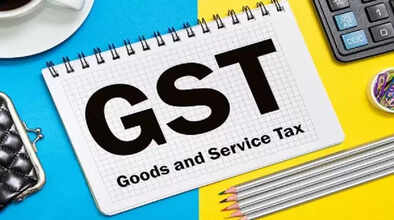Big GST Reform on the Horizon: 12% Tax Slab Likely to Be Scrapped — Here's What It Means for You

In what could become one of the most significant tax reforms since the introduction of the Goods and Services Tax (GST) in India, the Central Government is reportedly planning to abolish the 12% GST tax slab. According to reports by TV9, the Prime Minister's Office (PMO) has given in-principle approval to this proposal, which is expected to be discussed in the upcoming GST Council meeting. If approved, this reform could simplify the country's complex tax structure and bring relief to both businesses and consumers.
Understanding the Current GST Structure
India’s current GST system includes five primary tax slabs: 0%, 5%, 12%, 18%, and 28%. Additionally, special rates like 0.25% and 3% are levied on items such as gold and silver. The government is now considering eliminating the 12% slab entirely and shifting the goods and services under it to either the 5% or 18% bracket. This change is aimed at making the tax structure more streamlined, transparent, and easier to comply with.
Why the Government Wants to Scrap the 12% Slab
The proposed change is not just administrative — it's strategic. Financial experts believe that merging the 12% slab with the adjacent ones will simplify GST compliance, reduce litigation, and improve ease of doing business. Presently, around 19% of all GST-applicable items fall under the 12% slab. These items could become either cheaper or more expensive depending on which new slab they are moved to — 5% or 18%.
Ongoing Discussions with States
Since GST is a unified tax system involving both the Centre and the states, any amendment requires collective approval. The Ministry of Finance has begun consultations with state governments to reach a consensus. If most states agree, the new tax rates could be rolled out soon. Technical preparations for implementation are already underway.
Long-standing Demand from the Industry
Industry bodies and trade associations have long demanded a simplification of the GST rate structure. Many businesses found the current multi-slab system complex and burdensome, especially for small and medium enterprises. The potential removal of the 12% slab shows that the government is listening to these concerns and is actively working to create a more business-friendly tax environment.
How It Could Affect Prices
Depending on where products currently taxed at 12% end up — in the 5% or 18% slab — the impact on prices could be significant. If moved to 5%, consumers will benefit from price reductions. However, if moved to 18%, those same products could become more expensive. For example, goods like toothpaste, footwear, and certain household appliances may see price fluctuations.
Economic Impact and Broader Reform Agenda
Officials believe that this reform could enhance India’s economic stability and global competitiveness. A simpler tax system is expected to encourage domestic and foreign investment. Moreover, it could help strengthen India’s position in trade negotiations with countries that favor straightforward taxation models. This is particularly relevant as India continues to explore free trade agreements and boost its manufacturing sector under the ‘Make in India’ initiative.
What’s Next?
If the GST Council greenlights the proposal in its upcoming August meeting, the new tax structure could be implemented within months. States are being roped in for technical readiness and coordination. In parallel, the government is also contemplating changes to the income tax system, which may be introduced during the monsoon session of Parliament.
Final Thoughts
The elimination of the 12% GST slab represents more than just a numerical adjustment — it's a bold move toward a more efficient and transparent tax system. While it could lead to short-term price adjustments for certain goods, the long-term benefits for businesses, tax compliance, and the overall economy are expected to be significant. All eyes are now on the next GST Council meeting, where the fate of this transformative proposal will be decided.
Keywords for SEO:

